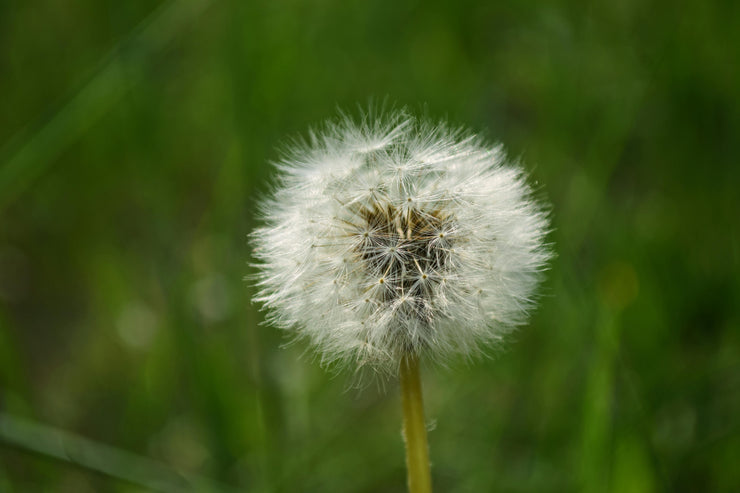
Does salt kill weeds in block paving?
If you want the shortest answer possible, then yes: salt can kill weeds in block paving. But it’s not always the best removal method. As your local paving specialists, we see the same cycle every spring.
Blown by the wind, seeds settle in the joints of your paving stones.
Then, debris builds up, and any washed-out jointing sand leaves tiny pockets where seedlings take root. If you want to make it harder for weeds to establish in the first place, it’s important to keep those gaps filled and well-drained.
You’ll see plenty of other quick hacks online, like boiling water, but these methods don’t address the underlying causes or prevent fresh seed from growing. What do Ovation Landscaping recommend?
Start with non-chemical, proven methods (hand tools, regular maintenance, and proper jointing), and use chemicals only as a last resort.
How salt works on weeds (and why results don’t last)
Here’s why it works: sodium chloride draws water out of plant tissues and scorches soft, green growth. That makes it reasonably effective on small, shallow-rooted seedlings in paving joints.
But it’s a contact action on top weeds, not deep-rooted ones, so perennials that are growing within the paving will re-sprout from the root unless you regularly repeat the process. Rain also dilutes and washes salt away, so results are rarely long-lived.
You’ll still see salt recommended in some ‘natural’ how-to guides, especially for hard paving surfaces, but almost always with caveats. In short, it can work, but the trade-offs mean it’s not the first tool you should reach for.
Safer, proven ways to remove weeds in block paving (ranked)
Looking for better ways to remove weeds? Here’s our top four choices ranked:
1. Manual extraction
You can deal with light infestations using a block-paving or weeding knife.
Slide the blade along the joint to sever stems, then use the hooked tip to lever out the crown and as much root as possible. Work after rain (or lightly hose first) to make roots release more easily.
Brush up all debris so it doesn’t become seed-friendly compost in the joints.
Ovation’s top tip: Once it’s clean and dry, re-fill the joints to block light and seed – kiln-dried sand for a quick top-up, or a hard-setting jointing compound for longer control (e.g. ProJoint™ Fusion or TITAN).
2. Boiling water
A simple, chemical-free option for seedlings and soft growth on paths and driveways. Pour directly onto foliage and expect top growth to collapse quickly. Deep-rooted perennials can re-shoot, so you’ll need to make repeated applications.
However, if you’re using this method, keep well away from beds and lawns you want to protect.
3. Thermal tools (gas torch/weed wand)
Heat ruptures leaf cells and is handy for rapid top-kill on hard surfaces. Use short passes – you want to wilt the weed, not incinerate it.
It’s important to note that flame weeders are not ideal for deep-rooted perennials and carry obvious fire risks, so use with care (and only on non-flammable, hard surfaces).
4. Targeted herbicides
If none of these methods are curbing the problem, spot application of an approved hard-surface weedkiller can help. We recommend reserving chemicals for stubborn cases and treating only the weed, not the whole area.
Shop with Ovation Landscaping for high-quality paving stones!
Now that you know the best ways to remove weeds from paving stones, maybe it’s time to upgrade your outdoor area!
If your current paving stones are looking worn or have lost their colour, we stock a top-quality supply of natural stone paving, including Indian sandstone, concrete block paving and even decorative aggregates. Get yours today, and turn your goals into reality.
FAQs
Is salt legal to use as a weedkiller in the UK?
Yes, but it’s not the top recommended choice. Instead, we recommend using authorised garden products and avoiding contaminating drains or borders.
Will salt void paving warranties?
Often, yes: it can be a risk. Always check your product’s small print before applying home cleaning methods.
What’s the single most effective prevention step?
Keep joints filled and stabilised, then seal. Repoint any gaps (use kiln-dried sand or a hard-setting jointing compound) and apply a quality sealer that hardens the jointing sand and stops weeds from settling.
What do experts say about using salt?
While advice is mixed, many experts recommend using nonchemical methods first (like salt, hand tools, boiling water). Ultimately, it’s down to the individual.